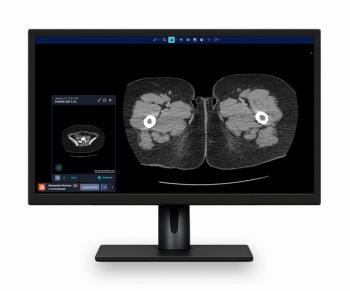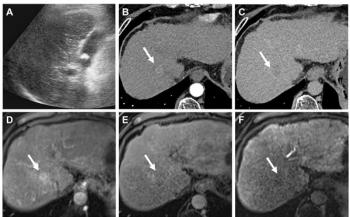
IT provides vital contribution to imaging center customer service
When economic hard times hit, the instinct of most companies is to take shelter, reduce spending, and wait for good times to return.
When economic hard times hit, the instinct of most companies is to take shelter, reduce spending, and wait for good times to return. In order to preserve dwindling capital assets they grow timid, cease acquisition activity, and slash advertising budgets.
Firms do this in spite of numerous studies showing companies that continue expansion activity while maintaining-or even increasing-advertising levels during recessions do significantly better financially than those that react to economic storms by downsizing and reducing spending.
The same principle applies to imaging centers and IT. Those facilities that continue to enhance their IT components and upgrade their digital infrastructure during economic downturns tend to increase market share through added efficiencies. Because the economy has lost momentum does not necessarily mean that sound business drivers have lost validity.
During the current recession, some imaging centers continue to sculpt their business models around efficiency gains. Information technology is the tool of choice; excellent customer service is the target. Satisfied customers, whether patients or their clinicians, translate directly to increased market share.
Battlefield Imaging's use of high-end digital technology and advanced IT in pursuit of superior customer satisfaction is an example.
The solutions in place at the Ringgold, GA, center include NextGen software for practice management and Siemens' syngo Suite for RIS/PACS and report distribution. Battlefield believes an unconditional commitment to IT growth improves customer excellence.
Battlefield's director of imaging, Barbara Marshall, said the center's goal is to provide comprehensive imaging services in a timely manner to every customer.
"If we don't stay current, we face the real possibility of losing that referral," Marshall said.
Battlefield performs about 45,000 imaging studies a year.
Battlefield installed syngo Suite just over two years ago. Marshall said the system has allowed the center to enhance customer service in several areas, including expedited scheduling, more efficient registration processes, and quicker exam throughput.
Patients are not the only ones to benefit. Patient demographic data collected during scheduling automatically flows to the RIS, and also populates modality worklists.
"Technologists no longer have to take the time to complete the patient demographics because it is automatically populated," Marshall said.
Technologists are now also able to transmit images to PACS and referring physicians with the click of a button.
"All in all, these IT improvements have increased our efficiency, improved employee morale, enhanced patient satisfaction, and streamlined communication with our referring physicians," Marshall said.
SCHEDULING ISSUE
Dr. James Busch, one of 10 radiologists with Diagnostic Radiology Consultants (DRC), the radiology group that supports Battlefield, said ease of scheduling is one of the issues they found their referring clinicians care most about.
"Clinicians are interested in how fast they can schedule an exam so they can get back to practicing medicine," he said.
Busch said clinicians also care about how quickly they can get the radiology report. Recent IT improvements at Battlefield have improved report turnaround times dramatically. Reports for routine imaging exams are sometimes available before the patient gets dressed.
Busch said most of the time, clinicians who send patients downstairs for an imaging study have the report in hand within 12 to 15 minutes, usually before the patient gets back upstairs to the clinician's office. This is a significant improvement over the 24 hours or more it once took to get reports back to clinicians.
Before Battlefield's IT improvements, when patients were referred out for imaging studies, they normally would not go right back to the clinician. Even if the studies were performed in the same building, because the radiology reports were not available, treatment could not be rendered the same day. Patients would have to call the next day for results and return at a later date for treatment.
Now, patients are often able to get a diagnosis and treatment the same day, advancing customer excellence even further.
"The patients are happy. And if the patients are happy, then the referring physicians are happy," Busch said.
Patients and their clinicians are not the only ones to enjoy the benefits of IT improvements. There are advantages for radiologists, too, particularly for those in groups that read for several sites.
Busch is also CEO of Specialty Networks, the architect of DRC's IT infrastructure. According to him, DRC was the world's first practice to feature a fully integrated radiology image interpretation suite in which RIS, PACS, speech recognition, and practice management were fully integrated, not just interfaced.
Having integrated software implemented across the entire system makes it easier for DRC radiologists at remote imaging centers to read images captured anywhere in the system.
"Common software systems are nice because there is no learning curve when you show up at a different site each day," Busch said.
Using a common IT infrastructure also allows DRC radiologists to read any study from any site, further increasing the quality of care.
"This lets us provide subspecialty interpretation across our entire practice," Busch said. "An exam performed at Battlefield might be read across town because the specialist happens to be across town that day."
GAME ON
A desire to stay ahead of the competition also drives other imaging centers toward advanced IT solutions. Zwanger-Pesiri Radiology, a group of 40 radiologists operating in eight locations on Long Island, NY, is one of them. Chief financial officer John Fragnoli described the Zwanger-Pesiri strategy in the simplest of terms.
"We want to be cutting edge in everything we do, whether with IT or with imaging equipment," he said.
Fragnoli said the company's IT goal is to be at least one step ahead of the competition at all times. This requires constant upgrading of computers and software to stay on the leading edge and find just that much more efficiency.
Efficiency is important because cost cuts and stagnant reimbursement levels have hit Long Island the same as everywhere else. Zwanger-Pesiri currently sees 1500 patients a day across its system.
"We have to increase efficiency to maintain and grow market share and IT allows us to do that, to streamline our operation," Fragnoli said.
When imaging centers embrace IT to achieve customer excellence, the process of system upgrades, enhancements, and implementations never seems to end.
Chief technology officer Robert Day said Zwanger-Pesiri is currently integrating billing into its RIS/PACS configuration. When complete, the system will not only manage all imaging functions, the integrated billing solution will handle all claims and payment processing, manage copayments, conduct online eligibility verifications, and create management reports.
A patient web portal is also pending.
"We already have a referring physician web portal so clinicians can access reports, view images, and see imaging schedules," Day said.
The patient portal will allow patients to read and print reports, forward reports to other physicians, and download and forward images electronically.
Day said one of the advantages of having an advanced central IT infrastructure in a multifacility setting is that there's less infrastructure to build as the company grows through acquisition or expansion. Zwanger-Pesiri's growth is based on a plug-and-play philosophy that eliminates redundant staff and duplicate infrastructure assets.
Departments such as records, billing, and the phone system are centralized, and the staff that supports administrative functions is housed in an office separate from all imaging centers. The existing, scalable IT infrastructure makes it easy to add on.
"Every time we open a new facility we don't need to hire separate administrative staff to support the new centers," Fragnoli said. "Everything is already in place."
A centralized administration, phone center, and IT infrastructure also means imaging centers can be totally dedicated to exams and patient care. When a patient enters an imaging center, everything in the building is patient-oriented, Day said. There are no nonmedical administrative or billing staff or offices onsite.
"This allows us to maximize space to get as much imaging equipment in there as possible and also to make it totally conducive to patient care," he said.
One of the IT features that tends to promote customer care and increase organizational efficiency is the integration of RIS and telephonics. This system allows patient files to be pulled up automatically based on caller ID. Convenience creates satisfaction.
"Satisfied customers create success," said Dr. Steven Mendelsohn, medical director of Zwanger-Pesiri.
WORLD-CLASS CARE
Carmichael Imaging, a small radiology group in Montgomery, AL, implemented an integrated Siemens RIS/PACS solution in July. The implementation positions Carmichael right where it wants to be in the chase toward more efficient healthcare, said center director Tommy Patterson.
"We opened in 2002 with the goal of providing patients in a tricounty area of central Alabama with an outpatient environment that would include state-of-the-art technology, convenient local services, and world-class diagnostic care," he said.
Now when an exam order is entered into the RIS, patient information is automatically available at the modality, which increases the accuracy of the data entered during each study. It also reduces the time PACS administrators need to spend correcting mistakes in patient names or record numbers.
Having patient information automatically populated at the modality not only avoids data entry errors, it also eliminates orphan studies. Prior studies are instantly available, and billing accuracy is also improved.
Now when a patient record is pulled up, Patterson said, the system automatically brings up prior studies and ensures the RIS data and images are available.
"There are definitely a lot fewer steps and keystrokes," he said.
Carmichael is always looking for ways to stay ahead of the competition in today's market, Patterson said. But there's more to it than simply installing new products.
"While we attempt to maintain a business edge, we also never lose sight of the fact that we're dealing with people," he said. "We're in the patient business. We have to be smart in what we do."
One area in which Carmichael looks extremely smart is women's imaging.
They see around 90 patients a day at the breast center, said Dr. Cynthia Lorino. The breast center provides a full set of women's imaging services, and was the first in the state to bring breast-specific gamma imaging onboard.
"We're able to do mammograms, ultrasound, BSGI, and MR," Lorino said. "We also have PET imaging available to us."
But what makes Carmichael's breast center truly unique in the central Alabama imaging market is its superior report turnaround time.
"We're the only place in the entire state of Alabama that offers same-day results," Lorino said.
The IT infrastructure plays a significant role in this, but most people know that same-day results could not be achieved without some extremely hard-working radiologists.
Lorino said with breast imaging, patients get their results before they leave the facility. If a patient needs a diagnostic study or ultrasound, it can be performed before she leaves the premises. Depending on individual factors, if a biopsy is indicated, patients can also have that procedure done the same day.
The importance of same-day results to women already stressed over abnormal mammography outcomes cannot be overstated. Same-day care relieves patients of needless additional worry while they wait for interpretation or follow-up studies and procedures.
"When patients have to wait to get called back three weeks later, they get frustrated," Lorino said. "As far as I'm concerned, if patients are happy, that makes clinicians happy."
Newsletter
Stay at the forefront of radiology with the Diagnostic Imaging newsletter, delivering the latest news, clinical insights, and imaging advancements for today’s radiologists.




























